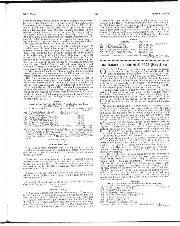He switched from Jaguar D-type to Lister-Jaguar for 1959 and the success continued as Clark’s reputation burgeoned. He also made his debut at Le Mans when sharing the tenth-placed Lotus Elite with Sir John Whitmore. It was Boxing Day 1959 before Clark first drove a single-seater racing car – his Gemini finishing eighth in the Formula Junior race – but he was already regarded as a talent in waiting.
F1 debut with Lotus
He signed with Aston Martin for 1960 but introduction of the front-engine F1 challenger was delayed so Clark made his Grand Prix debut with Lotus at Zandvoort. Fifth next time out in the Belgian GP, Clark finished third in that year’s Le Mans 24 Hours when sharing a Border Reivers Aston Martin DBR1/300 with Roy Salvadori. He drove a works Lotus 18-Climax for the balance of the season and excelled in F1, F2 and Formula Junior. He narrowly beat Dan Gurney in the F2 Kentish 100 at Brands Hatch and was crowned John Davy and Motor Racing British Formula Junior Champion –tying team-mate Trevor Taylor for the latter. He also finished third in the Portuguese GP as he completed a fine maiden F1 season eighth in the World Championship.
Clark concentrated on F1 during 1961 – the first season of new 1.5-litre rules. Ferrari dominated that year but Clark won the non-championship Pau GP and finished third in Holland and France when points were on offer. Fourth in the German GP, Clark diced with the Ferrari of championship leader Wolfgang von Trips during the opening laps of the Italian GP. However, they touched as they approached Parabolica for the second time. Von Trips’s car was launched into the crowd killing the German and 14 spectators. Team-mate Innes Ireland won the final race of the year but was released as team owner Colin Chapman invested in Clark’s youthful promise.












